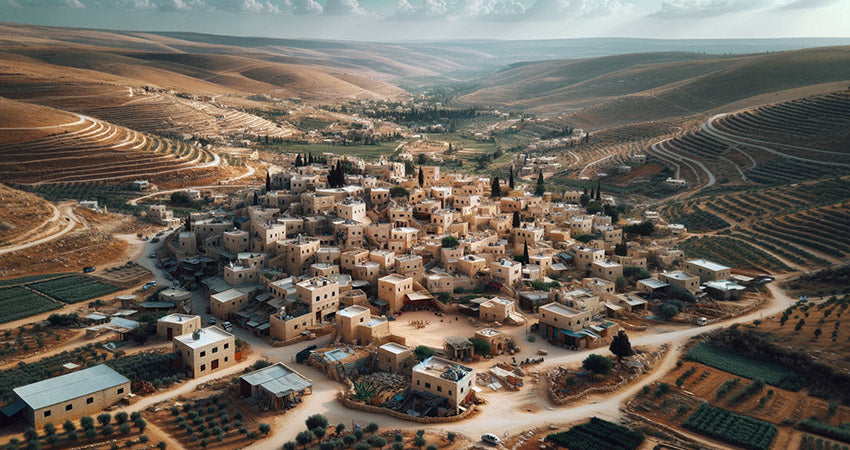
Ancient Palestine map by A. Andriveau (1876)
Alice PettirossoShare
The antique map “ Palestine Ancienne et Moderne ”, created by A. Andriveau in 1876 in Paris. It is a detailed cartographic artwork that portrays Palestine in various historical eras, elegantly blending the antiquity and modern times of the era.
The map is divided into different regions, each highlighted with distinct colors to make it easier to read and understand. The Galilee region is colored light blue, while Judea is represented in pink. Samaria is shown in pale yellow, creating a harmonious visual contrast that guides the eye through the complexity of the territories.
ORDER YOUR HAND PAPER MAP OF AMALFI NOW
Geographic and topographic details are accurately represented, including rivers, mountains, and historic cities like Jerusalem, which has a detailed map enlarged in the lower right corner. This section highlights the city's ancient walls and significant structures, offering an intimate look at the historic capital.
At the top left, a small inset map depicts the Nile Delta, providing greater geographic context. At the bottom of the map, an engraving of mountain relief adds an artistic touch, showing Mount Hermon in all its majesty.
At the top left, a small inset map depicts the Nile Delta, providing greater geographic context. At the bottom of the map, an engraving of mountain relief adds an artistic touch, showing Mount Hermon in all its majesty.
The inscriptions in French enrich the map with detailed explanations and a legend that deciphers the symbols used. Fine graphics and soft colors give this map an elegant, antique look, testifying to the art and science of 19th-century cartography.
Overall, this map is not just a geographic tool, but an artistic masterpiece that captures the history and beauty of Palestine with meticulous attention to detail and visually mesmerizing composition.
The map is an important historical testimony that offers a detailed look at Palestine through the various eras. Made in Paris, this map reflects European interest in the Middle East during the 19th century, a time when Orientalism and the discovery of biblical lands fascinated scholars, explorers, and the general public.
During the second half of the 19th century, Palestine was under the rule of the Ottoman Empire, and the area depicted on the map includes territories that are now part of Israel, Palestine, Jordan and Lebanon. Many European scholars and travelers visited the region in search of historical sites mentioned in the Bible.
The Andriveau map is significant because it combines the representation of ancient Palestine with that of his time, highlighting the geopolitical and cultural changes that the region had undergone. The various regions, such as Galilee, Samaria, and Judea, are clearly delineated, showing both ancient and more recent borders.
The detail dedicated to Jerusalem, with an enlargement of the city, reflects the importance of this sacred city for the three main monotheistic religions: Judaism, Christianity and Islam. The map also includes references to numerous biblical and historical sites, making it a valuable tool for understanding biblical history and the origins of the civilizations that inhabited the region.
Furthermore, the presence of geographical elements such as mountains, rivers and the Dead Sea, together with the representation of ancient communication routes, offers a complete vision of how landscape and geography have influenced the history and development of civilizations in Palestine.
In the context of the 19th century, this map served not only as a geographical tool, but also as a means of educating and captivating European audiences about the historical and spiritual importance of Palestine. It was a time when archaeological discoveries were rewriting the understanding of ancient history, and maps like the one at Andriveau played a crucial role in documenting and disseminating this new knowledge.

